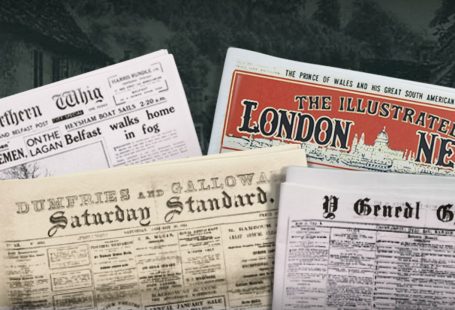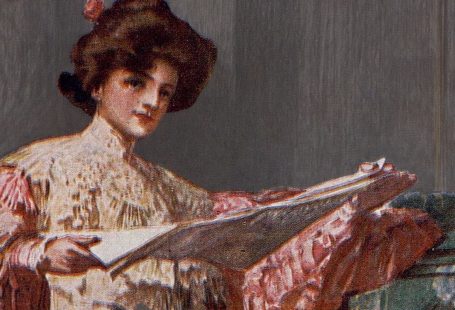‘Neither fish, fowl nor good red herring – that feeling of being betwixt and between.’ This is how hairdresser Mr Alexi describes the experience of being a teenager in a 1954 edition of The Tatler magazine.
A teenage dance in Dorset | The Tatler | 6 February 1957
In 1954, the word ‘teenager’ was a relatively new addition to the lexicon. Although it first appeared prior to the Second World War, it only really caught on in common usage during the late 1940s. And by the 1950s, people were beginning to ask, what should a teenager be? How should they behave? What should they wear?
In this special blog, using articles taken from the pages of the British Newspaper Archive, we explore the birth of the teenager in the United Kingdom, and how society regarded this new youthful phenomenon.
Want to learn more? Register now and explore The Archive
Teenage Triumphs
Some of the earliest mentions of the word ‘teenager’ in the British Newspaper Archive are in relation to fashion. In 1945, The Sketch features several outfits under the title ‘Teen-age Triumphs.’ There is a ‘playtime sweater,’ and a ‘young-looking and very smart’ dress available for teenager readers.
A year later, The Sketch features some more ‘lovely young-looking frocks’ in the themes of tartan and taffeta.
The Sketch | 18 September 1946
Looking at these designs, its appears as though being a teenager in the 1940s is something exciting, something to be celebrated – even though to our modern eyes, some of these outfits look a little grown up – such as this ‘Teenage Top-to-Toe’ look put together by Winifred Lewis in The Tatler, December 1948.
What Turns a Teenager Into a Terror?
This enthusiastic celebration of youth seems to fade from our newspaper pages as we roll into the next decade, the 1950s. We begin to see much more stereotypical and familiar representations of the teenager as difficult, grouchy, and generally problematic.
You can get a flavour of this from an advert for Nestlé’s Milo in the West London Observer, March 1950. The cartoon depicts a teenager and her mother, the latter of whom remarks ‘Sally’s so difficult these days.’ Her friend advises that like all teenagers, Sally simply ‘needs building up’ – naturally, with the help of Milo, a cup of which is sure to ‘bring a smile-o.’
West London Observer | 3 March 1950
Five years later in February 1955, one Mrs G of Leamington is writing to Mary Brown’s agony aunt column in the Daily Mirror, desperate to understand what it is that ‘turns a teenager into a terror:’
My son, who was fourteen a month ago, used to be reasonably obedient and straightforward. He confided in me and we were best of friends. This last year he’s been steadily changing. He’s cheeky and he’s sulky…Why should a boy change like this? Do you think he’s got into bad company? I’m so worried in case he becomes one of the ‘delinquents’ we read so much about.
Daily Mirror | 28 February 1955
In her response, Mary Brown writes at length about the changes teenagers face – so fast they seemingly happen at night, and all the ‘fears and bewilderments, secret and personal – not even to be spoken of to the most beloved parent.’ She advises Mrs G not to coddle her son, but to ‘show him he’s still your boy, however oddly he behaves. He still needs that assurance.’
What Should a Teenager Be?
Daily Mirror | 21 December 1954
Like Mrs G of Leamington, there were many in the 1950s who believed that teenagers were quite simply ‘delinquents,’ or at least engaged in upsetting the status quo in some other less dramatic way – staying out late attending dance halls, or watching the latest rock and roll movies (Bill Haley’s Rock Around the Clock caused a sensation when it was released in 1956, and it was banned in many cinemas).
But in 1954, agony aunt Mary Brown received a rather unusual letter from Mrs A of Dorset, ‘who worries because her daughter prefers to stay at home:’
How do I deal with a seventeen-year-old girl who seems content to let the pleasures of life pass her by? I feel now is the time when she should be having fun with people of her own age, not sitting by the fire with a book. I had lots of fun in my teens, and should like her to have some more happy memories.
Emma Soames at a ‘Teenage Twist’ party | The Tatler | 8 May 1963
Mary Brown quite rightly points out that some people do not find pleasure in the same things, and that Mrs A should let her daughter Monica ‘develop in her own way:’
Remember all those despairing mothers who lie tearfully awake wondering where their teen-age daughters are and what they are doing. Be grateful that your daughter finds pleasure in your happy home.
But what Mrs A of Dorset is expressing reflects a palpable anxiety of her age. What is a teenager? Should they be bad? Should they be good? Should they be left to grow up early, or be kept as a child for as long as possible?
They Grow Up So Much Earlier
And if adults of the age were busy wondering what a teenager should be like, they were also worrying whether or not they were just growing up too soon.
‘They grow up so much earlier these days,’ said one mother a little wistfully. ‘What with teenage dances, teenage parties and teenage dresses, they are out of school stockings and nylons before you know where you are – if you see what I mean.’
This mother’s lament is featured in the pages of The Tatler in 1954, and yet the magazine abounds with pictures of so-called ‘teenage dances,’ as well as teenage dresses, such as this one ‘for the young girl who longs to have her first ‘little black dress.”
The Tatler | 24 September 1958
And this issue carried on into the 1960s. Another worried mother wrote to Martha Hulmes, an agony aunt for the Liverpool Echo, asking ‘why can’t teenagers be teenagers and not try to be women too soon?’
I know that I will be thought of as old-fashioned, but my daughter of 15 expects me to be able to answer the most difficult questions about love and marriage….Surely we have time enough to learn the facts of life once we’re married and have to face them.
Martha Hulmes, in her reply, points out how ‘girls and boys of 15 often consider themselves adults, even though still at school. To keep the friendship of our children we have to adapt ourselves to their thinking and way of life.’
Aren’t Our Girls a Mess?
But still, caught betwixt and between youth and adulthood, teenagers (and this complaint seems disproportionately levied at girls in The Archive) were still seen as scruffy and untidy.
In a 1954 article entitled ‘Teenagers Need Not Look Untidy‘ for The Tatler, Jean Cleland describes how teenage girls’ hair ‘often looks awful.’ This seems to be somewhat of an issue in 1954. Two months later hairdresser Steiner addresses teenage girls, again in the pages of The Tatler:
Be trim, be tidy about your head! No casual look unless it’s carefully styled, for it soon becomes the ‘untidy’ look. What to do about your hair? Wash it rigorously once a week and brush it vigorously twice a day, with the softest of bristle brushes. Still wondering what to do about your hair? Better see Steiner!
Over a decade later in 1966, Tatler’s Angela Ince describes teenage girls as a ‘mess’ – ‘taking pains to look their worst.’
Why do they clump around in Granny shoes? Why do they wear tiny freezing skirts that stop short at the most unflattering length ever devised? … Her hair is either dead straight and long as she can get it, or as though designed by Pythagoras, curtly short and geometric. It surrounds a face that could have just walked out of a mortuary, chalk-white, pale-lipped, and with eyes cunningly made up to look as though they’ve been in a brawl.
But despite Ince’s subjective reservations regarding the style of teenage girls – she can’t help but celebrate them – returning to that upbeat joy of being young which is so evident in fashion spreads from the 1940s:
Whether we approve or not, the British girl is regarded abroad as a dish, a doll, a dazzler. Though New Yorkers are startled by our short skirts, and Paris considers them inelegant, this hasn’t stopped London becoming the centre of the world’s ready-made clothes business. And one of the reasons for our international fashion ascendancy seems to be the readiness of British girls to try out any fashion gimmick, no matter how nutty.
And through the pages of the British Newspaper Archive, it is possible to see what an impact the birth of the teenager had in the United Kingdom – its cultural impact cannot be ignored. Look out for more blogs where we will explore other aspects of youth culture in Britain – such as the Teddy Boys and Girls from the 1950s, and the hippie movement of the late 1960s and early 1970s.















